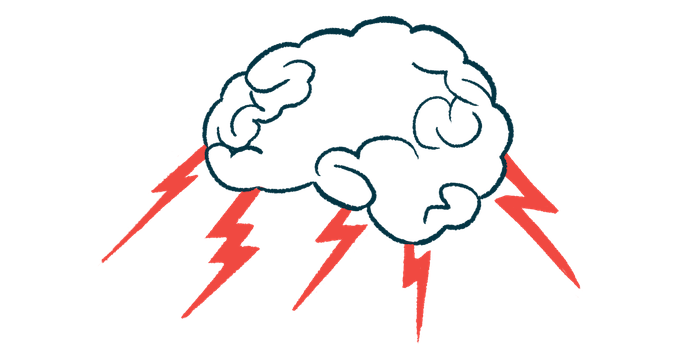Healthy brain region works OT to control Parkinson’s symptoms: Study
Cerebral cortex can offset damage to dopamine-making basal ganglia

In people with Parkinson’s disease, the cerebral cortex of the brain can compensate for disease-related dysfunction in the basal ganglia, the main part of the brain affected by Parkinson’s.
Researchers found that patients with milder Parkinson’s symptoms have more compensatory activity in the cerebral cortex, while patients with more severe symptoms tend to have less activity. This finding implies that boosting the cerebral cortex’s activity may be useful in easing such symptoms.
Their study, “Clinical severity in Parkinson’s disease is determined by decline in cortical compensation,” was published in Brain.
Parkinson’s disease largely affects the brain in region called basal ganglia
“In [P]arkinson’s we solve the dopamine deficiency with drugs. But with these new findings we are now going to look much more at how we can strengthen that compensation by the cerebral cortex,” Rick Helmich, MD, PhD, a study co-author and neurologist at Radboud University Medical Center in the Netherlands, said in a press release.
“We saw in a previous study that exercising three times a week helps against symptoms, and prevents shrinkage of the cerebral cortex. Thanks to the current study, we know why that cerebral cortex is so important,” he added.
Parkinson’s is caused by the death and dysfunction of nerve cells responsible for making the signaling molecule dopamine, possibly as a consequence of the accumulation of toxic forms of the protein alpha-synuclein. These cells are mostly located in the basal ganglia, a part of the brain that helps control movement and cognition.
It’s established that basal ganglia dysfunction causes problems with neurological signaling that ultimately leads to disease symptoms. But from patient to patient, the amount of dysfunction doesn’t show a clear connection with symptom severity, and most patients continue to experience symptom progression even after the basal ganglia is completely destroyed.
Other parts of the brain might be compensating for the damaged basal ganglia, with symptoms worsening only when those other regions are no longer able to handle the extra tasks.
“The presence of dysfunction in one brain region … would in turn call for compensation elsewhere in the nervous system,” the scientists wrote.
Prior work specifically has suggested that parts of the cerebral cortex — the outer layer of the brain that is known to play important roles in higher cognitive processes — may have compensatory activity in Parkinson’s.
353 patients played a computer game while MRI scans tracked brain activity
Researchers at Radboud University tested this idea through an experimental setup where MRI scans were used to track brain activity while participants underwent a task requiring motor control and cognitive effort. Basically, participants played a computer game where they had to hit different buttons as quickly as possible in response to cues.
“We used an action selection paradigm to investigate cerebral mechanisms underlying abnormal motor control in Parkinson’s disease, which implicates both motor symptoms (e.g. bradykinesia) and cognitive deficits (e.g. decision-making), and which was designed to elicit cortical compensatory mechanisms,” the scientists wrote.
Using this setup, they assessed brain activity in 353 people with Parkinson’s disease and 60 people with no known neurological problems. Patients were divided into three groups — diffuse-malignant, intermediate, and mild-motor predominant — based on the severity of their Parkinson’s motor symptoms. These subtypes are thought to reflect distinct routes of alpha-synuclein propagation.
As expected, Parkinson’s patients had markedly reduced basal ganglia activity compared to people without disease. However, no clear differences in basal ganglia activity were seen based on disease severity.
Patients with less severe symptoms, however, tended to have more activity in certain parts of the cerebral cortex, specifically the superior parietal and premotor cortex.
Researchers noted that this compensatory cerebral cortex activity was especially apparent during parts of the task where participants had to be actively making decisions about what to do.
“We showed that lower symptom severity was consistently associated with higher activation in superior parietal and premotor cortex, particularly during high demands on action selection,” the researchers wrote. These findings, they added, may explain why patients tend to experience worse symptoms during voluntary movements that require choosing between different actions, as this may overburden the cortex.
Cerebral cortex most active in people with milder Parkinson’s symptoms
Parkinson’s patients with milder symptoms actually tended to have more cortex activity compared to what was seen in people with no disease — implying that, in these patients, the cortex is working overtime to compensate for the dysfunctional basal ganglia.
“People with mild symptoms showed much more activity in the cerebral cortex, especially in areas that are involved in controlling movement. These areas were even more active than in healthy volunteers, which demonstrates their compensatory role,” said Martin Johansson, a PhD candidate at Radboud and study co-author.
“In patients with severe symptoms, on the contrary, the cerebral cortex was much less active than in healthy volunteers,” Johansson added.
In further analyses, the researchers showed that Parkinson’s patients with more cortex activity also generally had less severe bradykinesia (slowed movement, a classic disease motor symptom) as well as better cognitive scores.
Overall, these findings “support the hypothesis that [person-to-person] variability in symptom severity in Parkinson’s disease may be determined by compensatory cortical processes rather than basal ganglia dysfunction,” the scientists wrote.
“Accordingly,” the team added, “we predict that the worsening of motor symptoms is primarily driven by decline in parieto-premotor compensation.”
The researchers currently are working on a study to further test this idea by tracking changes in patients’ cortex activity and motor symptoms over time.







